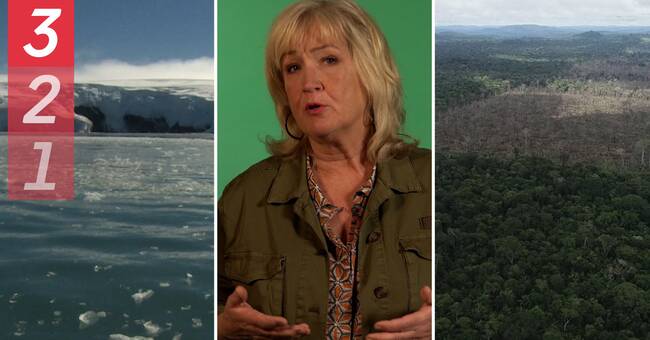Two simple curves speak their clear language.
Climate scientists call it "RCP 8.5", its worst case scenario, where the earth enters a permanent, greenhouse-like state with a temperature increase of 2.7-3.1 degrees to 2100 and a sea level that is 10-60 meters above today's.
This is where we are headed, because despite decades of climate negotiations, promises and a global pandemic, carbon dioxide continues to rise in the atmosphere.
The report "Trajectories of the Earth System in the Anthropocene" (in the scientific journal PNAS) came a few years ago and since then several scientific reports have confirmed how human activities already affect the Earth's climate on a global level.
The climate systems that are our protection today are "sleeping giants" that can become our enemies.
Of 15 identified so-called "tipping points", threshold effects, nine have begun to show signs of changes that may be beyond our control.
Delicious greenhouse gases
Every year, the earth's forests, seas and land areas absorb 4.5 billion tonnes of carbon that would otherwise end up in the atmosphere and accelerate the warming of the planet.
Several systems are now so stressed that they will instead start leaking greenhouse gases.
Then so-called tipping points, or threshold effects, occur, where climate systems can begin to shine.
The permafrost in Siberia is an example, it has started to thaw, in the summer of 2020 the record temperature was measured 38 degrees.
According to a report from the Institute of Medicine in Washington, the thawing permafrost contains potentially life-threatening viruses and bacteria such as anthrax that have been frozen for hundreds of years.
The thawing permafrost leaks methane, which is a 23 times more powerful greenhouse gas than carbon dioxide.
Catastrophic sea level rises
Another threshold effect that worries researchers more and more is how western Antarctica has begun to melt.
In Antarctica, more than 60 percent of the world's freshwater is bound in ice.
It is this meltdown that can cause catastrophic sea level rises in the long run.
The Amazon rainforests can be transformed from jungle to savannah in just a few decades.
The trees are already showing signs of heat stress.
In addition, should 20-25 percent of the forest be felled, then the "river in the sky" disappears, the ingenious cycle of moisture and water that causes the Amazon to produce just over half of its own precipitation that supplies most of South America with rain.
This is not far off in time, because 15-17 percent of all forests have already been felled.
Then the Amazon goes from binding 20 percent of all carbon dioxide in the world to start emitting carbon dioxide.
Criticism of the scenario
One objection to "Hot House Earth" is that it is too early to link the increasingly extreme weather of the last decade to global warming.
But the researchers' argument is that if we are already seeing such worrying effects of warming to just over a degree, there is reason to believe that the earth is more sensitive to global warming than previously thought.
Climate optimists are talking about a turning point.
If all the climate promises that the EU, China, USA and a number of companies now deliver are fulfilled, global warming can stop at just above two degrees above pre-industrial levels, calculations from the Carbon Action Tracker show.
"Unimaginable challenge"
But the researchers behind "Hot House Earth" warn that we may already have lost control of the climate.
Even if there are sharp emission reductions, the earth's climate will continue to change as the greenhouse gases remain in the atmosphere for a long time.
Their conclusion is that new technology is needed that removes carbon dioxide from the atmosphere.
If the world is to keep global warming at 1.5 degrees, emissions must stop completely in 6 years and 240 days, calculated on the basis of the models in the IPCC's report "Global Warming of 1.5 ° C" from 2018.
It is an almost inconceivable political challenge.
Is it too late for the climate already despite all the new promises? The curves that determine the planet and our future go in the wrong direction. For the next three Mondays, Aktuellt makes an investment in the raging climate where we depict extreme heat in the Middle East, a dying Amazon and the melting ice sheets.

